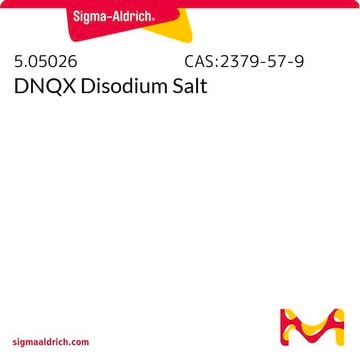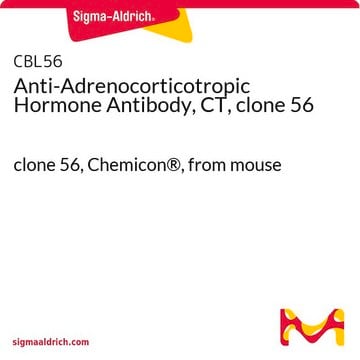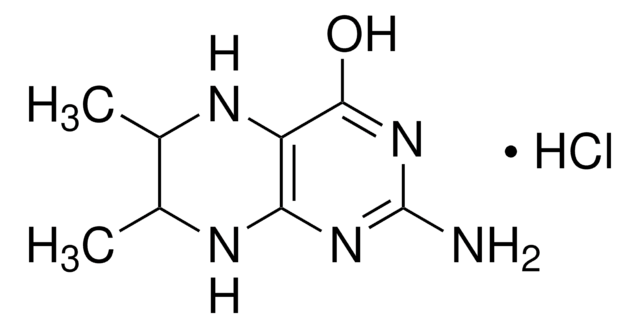D0540
DNQX
≥98% (TLC)
Sinônimo(s):
6,7-Dinitroquinoxaline-2,3(1H,4H)-dione
About This Item
Produtos recomendados
Nível de qualidade
Ensaio
≥98% (TLC)
Formulário
powder
cadeia de caracteres SMILES
[O-][N+](=O)c1cc2NC(=O)C(=O)Nc2cc1[N+]([O-])=O
InChI
1S/C8H4N4O6/c13-7-8(14)10-4-2-6(12(17)18)5(11(15)16)1-3(4)9-7/h1-2H,(H,9,13)(H,10,14)
chave InChI
RWVIMCIPOAXUDG-UHFFFAOYSA-N
Informações sobre genes
human ... GRIA1(2890) , GRIA2(2891) , GRIK1(2897) , GRIK2(2898) , GRIK3(2899) , GRIK4(2900) , GRIK5(2901)
mouse ... Gria1(14799)
rat ... Gria1(50592) , Grik1(29559) , Grik4(24406) , Grin2a(24409)
Aplicação
Ações bioquímicas/fisiológicas
Características e benefícios
Escolha uma das versões mais recentes:
Certificados de análise (COA)
Não está vendo a versão correta?
Se precisar de uma versão específica, você pode procurar um certificado específico pelo número do lote ou da remessa.
Já possui este produto?
Encontre a documentação dos produtos que você adquiriu recentemente na biblioteca de documentos.
Os clientes também visualizaram
Artigos
DISCOVER Bioactive Small Molecules for Neuroscience
Active Filters
Nossa equipe de cientistas tem experiência em todas as áreas de pesquisa, incluindo Life Sciences, ciência de materiais, síntese química, cromatografia, química analítica e muitas outras.
Entre em contato com a assistência técnica














